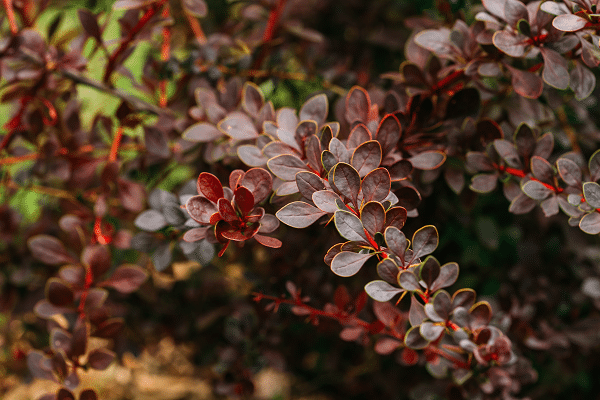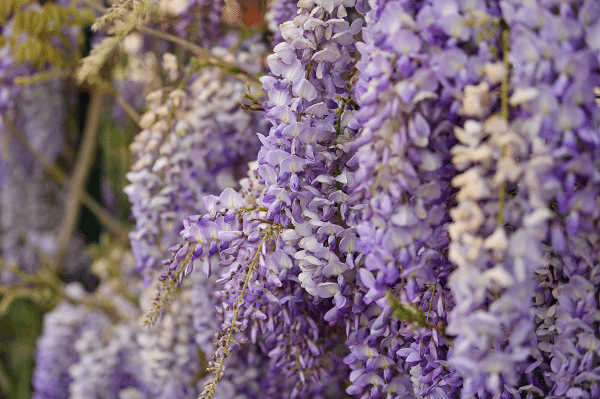Invasive plant species pose a significant threat to America’s unique biodiversity. These hardy and aggressive organisms, introduced intentionally or accidentally, grow and reproduce rapidly, often outcompeting native species for resources and altering habitats. The consequences can be far-reaching, from the loss of indigenous plant and animal species to significant changes in the landscape and local ecology. This article delves into some of the worst culprits, examining their destructive capabilities, geographical reach, and the efforts made to control their spread.
Contents
English Ivy (Hedera helix)
Regarded as a decorative plant due to its evergreen foliage and rapid growth, English Ivy is more than just an aesthetic issue. This invasive plant clings to and climbs up trees, walls, and nearly any structure in its path. Over time, it covers the entire surface, blocking sunlight and, in the case of trees, potentially leading to their death. Its robust nature allows it to grow in a variety of conditions, contributing to its status as an invasive species.
Control measures for English Ivy are labor-intensive and often require a combination of methods. Manual removal is usually the first step, followed by the application of herbicides to ensure that any remaining parts of the plant do not regrow. Public education about the adverse impacts of this plant is also essential, discouraging its use in gardening and landscaping.
Japanese Barberry (Berberis thunbergii)
Japanese Barberry, native to Japan and Eastern Asia, is now a familiar sight in many American forests. Its thorny branches and attractive, colorful leaves have made it a popular choice for hedges and ornamental plantings. However, this plant poses a significant threat to local ecosystems, altering soil chemistry, outcompeting native plants for nutrients, and acting as a reservoir for ticks, increasing the risk of Lyme disease transmission.
The eradication of Japanese Barberry requires sustained efforts and awareness. Physical removal can control its spread, although this needs to be carried out with care due to the thorny nature of the plant. Biological control measures are also under consideration, with certain insects and fungi showing promise in reducing barberry populations.
Black Locust (Robinia pseudoacacia)

Originally from the southeastern United States, Black Locust has expanded its reach across the country and even overseas. Its rapid growth and ability to thrive in poor soils make it a serious concern for native ecosystems. The dense growth of Black Locust displaces native plants and changes soil conditions, making it more difficult for native species to thrive.
Efforts to control Black Locust are ongoing and primarily involve mechanical removal or the application of herbicides. However, due to its extensive root system, this plant is particularly challenging to eradicate completely. Promoting native alternatives for landscaping and reforestation can also help prevent the spread of this invasive species.
Chinese Wisteria (Wisteria sinensis)
Despite the enchanting appearance of its hanging clusters of purple flowers, Chinese Wisteria is a severe threat to native ecosystems. This vigorous climbing vine grows rapidly, extending its tendrils around trees, shrubs, and structures, often leading to their downfall under its weight. Once established, it is challenging to remove, given its resilience and extensive root network. This plant not only affects other vegetation, but its ability to alter habitats can also have a significant impact on wildlife.
Chinese Wisteria has established itself in many areas across the United States, posing a considerable challenge for control measures. Manual removal of vines and roots, combined with the careful application of herbicides, can be effective, but it requires substantial effort and vigilance to ensure this plant does not regrow. Avoiding the use of Chinese Wisteria in landscaping and replacing it with native alternatives is also a crucial part of the solution.
Norway Maple (Acer platanoides)
Norway Maple is a large deciduous tree native to Europe and has now become invasive in many parts of the United States. It was initially introduced for its aesthetic value in urban landscapes, but this tree is now known for its capacity to outcompete native species. The dense canopy formed by Norway Maple blocks sunlight from reaching the forest floor, inhibiting the growth of other plants and leading to a decrease in biodiversity.
Dealing with Norway Maple requires comprehensive efforts. Small seedlings can be manually removed, but larger trees often necessitate the use of machinery or professional tree services. After removal, it is essential to monitor the area for regrowth regularly. Replanting with native tree species after removal is highly recommended to help restore the natural ecosystem balance.
Purple Loosestrife (Lythrum salicaria)
Purple Loosestrife is a perennial herb known for its stunning purple blooms, making it a popular ornamental plant. Unfortunately, this plant’s beauty belies its destructive nature. It can rapidly colonize wetlands, leading to a decline in native plant diversity and disrupting the habitats of various animal species, especially those dependent on the original wetland plant species.
Control of Purple Loosestrife is complex due to its ability to reproduce both from seeds and vegetative propagation. Manual removal can help in less infested areas, but for larger infestations, biological control using beetles that feed on this plant has shown promise. Constant vigilance and control efforts are necessary to prevent the reestablishment of this invasive species.
Japanese Honeysuckle (Lonicera japonica)
Japanese Honeysuckle is an attractive vine bearing fragrant flowers, often used in ornamental plantings. However, it is a highly invasive species known to disrupt native ecosystems significantly. It grows rapidly, twining around trees and shrubs, or spreading over the ground, smothering native plants by monopolizing sunlight and resources. This leads to the reduction of native plant diversity, with implications for the associated animal species as well.
Addressing the Japanese Honeysuckle invasion requires a multi-pronged approach. Manual removal can be effective for smaller infestations, but for larger or denser infestations, herbicide treatments may be necessary. Moreover, ongoing monitoring of treated areas is vital to catch and manage any regrowth promptly. Promoting the use of native plants over invasive species such as Japanese Honeysuckle is key to preventing further spread.
Conclusion
Understanding the threat posed by invasive plant species is crucial in maintaining the rich biodiversity of America’s ecosystems. The plants detailed in this article – English Ivy, Japanese Barberry, Black Locust, Chinese Wisteria, Norway Maple, Purple Loosestrife, and Japanese Honeysuckle – represent some of the most problematic. They cause significant harm by outcompeting native plants for resources, changing habitats, and thus affecting the broader ecosystem, including animal species. Control and prevention efforts, including public education, physical removal, herbicides, and biological control methods, are crucial in combating these invasive species. Everyone can contribute by choosing native plants for gardening and landscaping, and by participating in local removal efforts.





